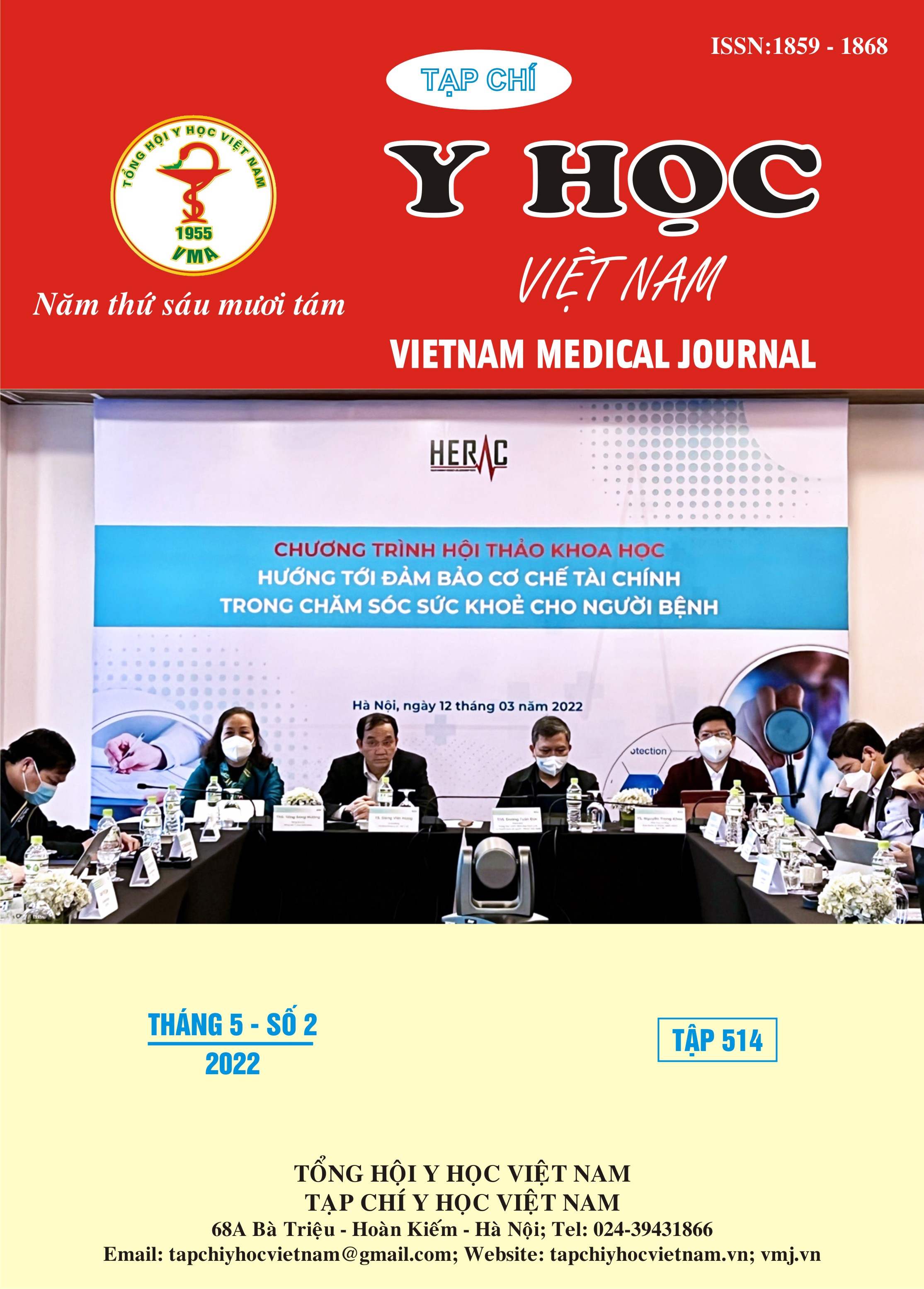MORPHOLOGICAL CHARACTERISTICS OF EDWARD’S SYNDROME ON ULTRASOUND IN PRENATAL SCREENING AT THE CENTRAL OBSTETRICS AND GYNECOLOGY HOSPITAL
Main Article Content
Abstract
Edward’s syndrome is the second cause of the number chromosomal abnormalities, is a rare genetic disease with a high fetal death rate and only very low children can survive past their first year. The screening and prenatal diagnosis are very important, helping to reduce the incidence of child bearing birth defects and perinatal death. While some in depth invasive methods have not been widely applied such as tests with sample taken from amniotic fluid, umbilical venous, placenta biopsy, ultrasound appears to be a very simple, necessary and use in most health care services, diagnose the morphological abnormalities of the fetus. Objectives: (1) Describe some morphological fetus on ultrasound of prenatal Edward’s syndrome (2) Evaluate the value of ultrasound fetuses in prenatal screening of Edward’s syndrome. Subjects and methods: Prospective and retrospective descriptive study on 6946 pregnancies with gestation age from 11 to 32 weeks visited for ultrasound in the Central Obstetrics and Gynecology Hospital during period from 1/2012 to 8/2021. Results: Risk of Edward’s syndrome increased gradually maternal age, maternal age from 35 years or older had the highest frequency of trisomy 18 pregnancies (50,8%). Increased nuchal translucency was found in 69,4% of fetuses with chromosomal abnormalities. The rate of morphological abnormalities on ultrasound: the chest area was the most common 43,5%, the head – face area 22%, bone system 17,7%, abdomen area 16,8%. To compare the clinical results, ultrasound can detect fetal abnormality with sensitivity 85,8%, specificity 96,3%, false positive rate 3,7%, false negative rate 14,2%. Conclusion: Detecting fetal morphological abnormalities by ultrasound is very valuable in screening Edward’s syndrome, especially with gestation age from 11 to 32 weeks with a rather high sensitivity 85,8%, specificity 96,3%.
Article Details
Keywords
Edward’s syndrome, prenatal screening and diagnosis, morphological characteristic
References
2. Carey JC. Perspectives on the care and management of infants with trisomy 18 and trisomy 13: striving for balance. (1531-698X (Electronic))
3. Gina Santucci VB, Tammy I. Kang. Caring for the Infant With Trisomy 18.
4. Screening for Fetal Chromosomal Abnormalities: ACOG Practice Bulletin, Number 226. (1873-233X (Electronic))
5. Drugan A, Yaron Y Fau - Zamir R, Zamir R Fau - Ebrahim SA, Ebrahim Sa Fau - Johnson MP, Johnson Mp Fau - Evans MI, Evans MI. Differential effect of advanced maternal age on prenatal diagnosis of trisomies 13, 18 and 21. (1015-3837 (Print))
6. Donnenfeld AE, Mennuti MT. Sonographic findings in fetuses with common chromosome abnormalities. (0009-9201 (Print))
7. Yang JH, Chung Jh Fau - Shin JS, Shin Js Fau - Choi JS, Choi Js Fau - Ryu HM, Ryu Hm Fau - Kim MY, Kim MY. Prenatal diagnosis of trisomy 18: report of 30 cases. (0197-3851 (Print))
8. Nyberg DA, Kramer D Fau - Resta RG, Resta Rg Fau - Kapur R, et al. Prenatal sonographic findings of trisomy 18: review of 47 cases. (0278-4297 (Print))


